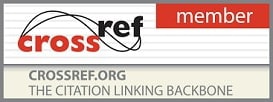Vol. 9, Issue 1, Part I (2025)
Ultrasound-assisted extraction of anthocyanins from butterfly pea flower (Clitoria ternatea L.): A sustainable approach
Arshi Siddiqui, Navin Chandra Shahi, Ashutosh Dubey, Rajiv Singh and Praveen Vikram Singh
The Butterfly Pea Flower (Clitoria ternatea L.), rich in anthocyanins, offers significant health advantages and applications in food, pharmaceuticals, and cosmetics. Traditional extraction methods often face challenges such as high energy and solvent use. Ultrasound-assisted extraction (UAE) emerges as a sustainable solution, offering faster processing, lower energy demands, and higher yields. The purpose of this study is to extract anthocyanins from butterfly pea flower (Clitoria ternatea L.) using ultrasound-assisted extraction (UAE). Different solvents (distilled water, 70% ethanol-water, phosphate buffer) were tested for their efficiency, and the effects of ultrasound parameters (ultrasonic power (200–250 W), sonication time (15–35 minutes), and solid-solvent ratios (1:20–1:40 g/ml)) on total anthocyanin content (TAC) were evaluated. The highest TAC was observed with UAE using phosphate buffer. Results indicated significant variations in total anthocyanin content, ranging from 14.19±0.168 to 49.26±0.2 mg CE/g of dry weight, based on the experimental conditions. The highest yield (49.26±0.2 mg CE/g) was achieved at 225 W, 35 minutes, and a 1:30 g/ml ratio. Beyond optimal conditions, efficiency declined due to dilution and degradation. Statistical analysis confirmed the significance of the studied variables. UAE proved to be an efficient and sustainable technique for anthocyanin extraction, offering higher yields and reduced processing times compared to conventional methods.
Pages: 726-729 | 1269 Views 606 Downloads






